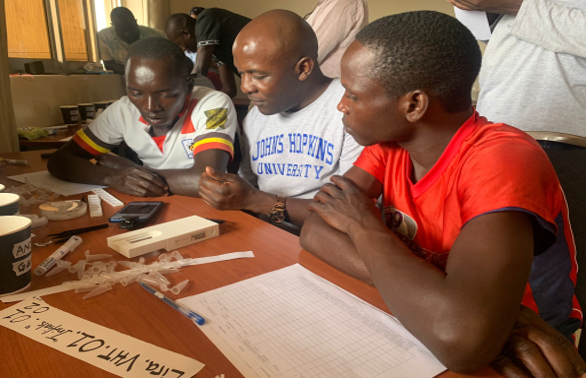VectorCAM: A Digital Innovation to Advance Entomological Surveillance
Team: VectorCam
- Program: Biomedical Engineering
- Course: CBID Masters Global Health Innovation
Project Description:
Malaria affects an estimated 227 million individuals each year, resulting in over 400,000 deaths, most of whom are pregnant women and children under five in sub-Saharan Africa. Currently, efforts to eliminate malaria rely on monitoring vector species composition, abundance, distribution, and behavior across different transmission geographies. For effective malaria control, a robust vector surveillance system should drive targeted interventions and resource allocation. For example, one primary malaria vector, Anopheles funestus, has a different biting pattern than another, Anopheles gambiae, and therefore necessitates different intervention strategies.
The current structure of vector surveillance begins with mosquito collection, where mosquito specimens are collected at sentinel sites across the country using various collection methods such as CDC light traps, pyrethroid spray catches, and human landing catches. These specimens are transported to a central laboratory and morphologically identified for sex, species, and abdominal status by vector control officers (VCOs), who study entomology and vector surveillance for at least 3 years. Then a subset of the specimen is sent for molecular identification through polymerase chain reactions. However, the number of entomologists is limited and hard to retain in areas with the highest burden of malaria. Unfortunately, the global shortage of entomologists hinders large-scale surveillance efforts, especially where they are needed most. As a result, the sites where specimens are collected and analyzed are sparsely distributed across a target region and treated as a representation of the entire country. These lead to inaccuracies in the interventions deployed, which is further worsened given the time lag between the capturing of specimens and the reporting time of usable data for decision-making.
VectorCam aims to fill this gap, being the first low-cost AI-based tool that automatically detects a mosquito’s species, sex, and abdomen status, thereby deskilling the identification process. Task-shifting efforts to Village Health Teams (VHTs) will generate higher throughput and widespread surveillance coverage, enabling better-informed, data-driven malaria intervention decisions cost-effectively.
Project Poster
Open full size poster in new tab (PDF)
Project Post Summary:
VectorCam is a novel digital tool that automatically detects a mosquito’s species, sex, and abdomen status, thereby deskilling the identification process. Task-shifting efforts to Village Health Teams (VHTs) will generate higher throughput and widespread surveillance coverage, enabling better-informed, data-driven malaria intervention decisions cost-effectively. Here we present our early-stage device and summative usability studies conducted



